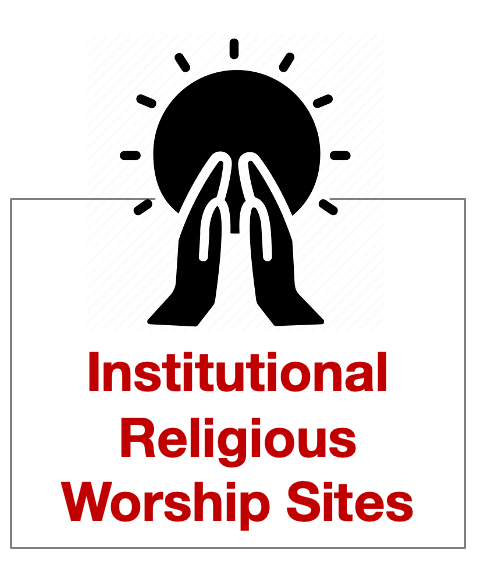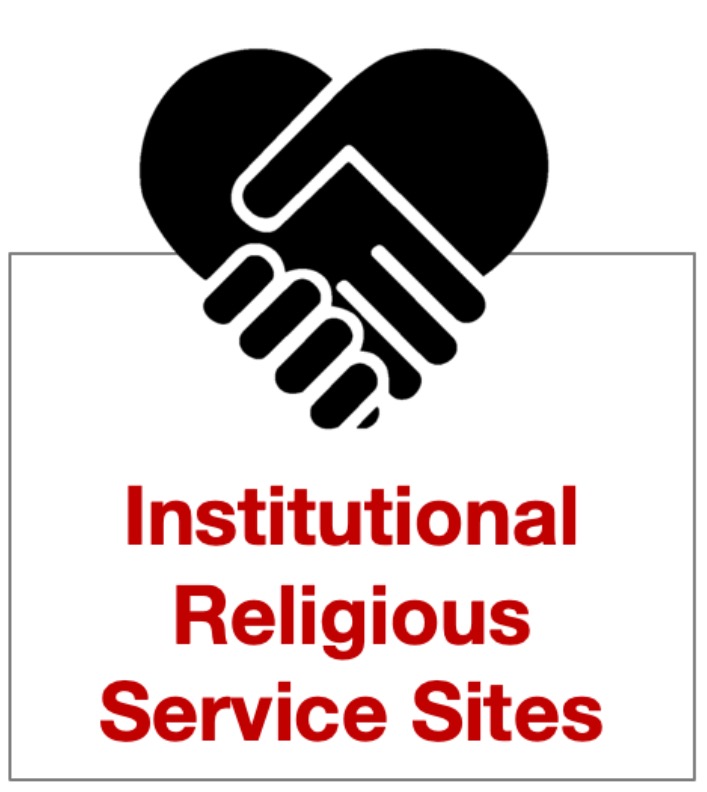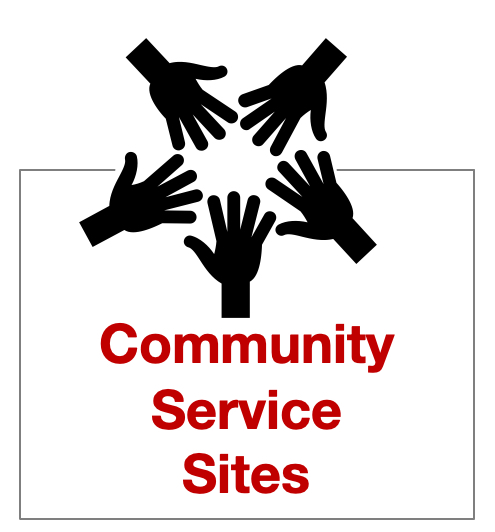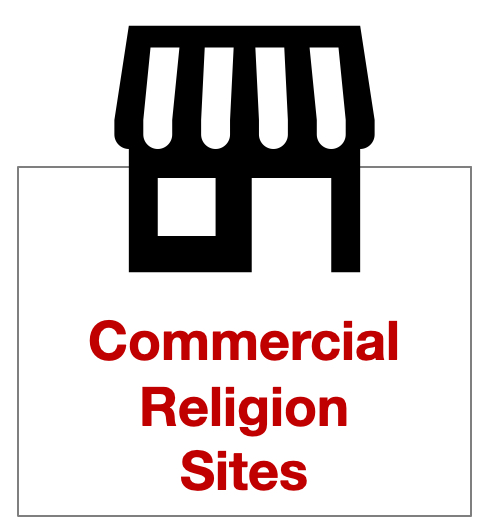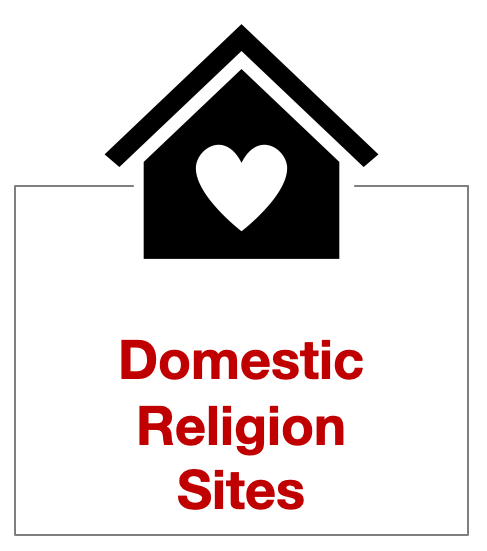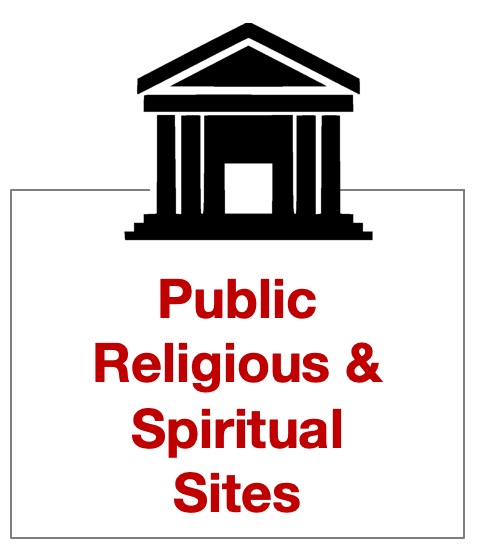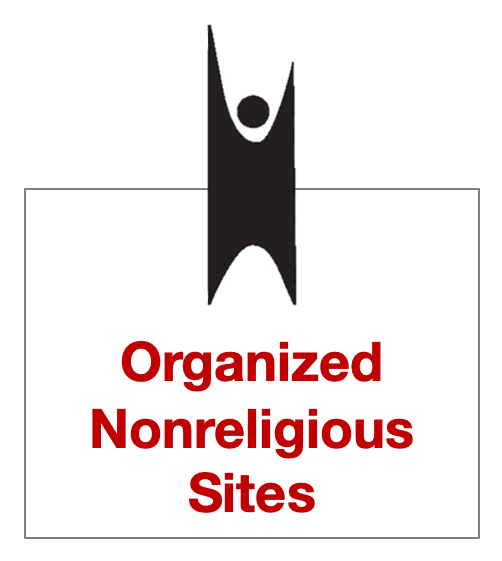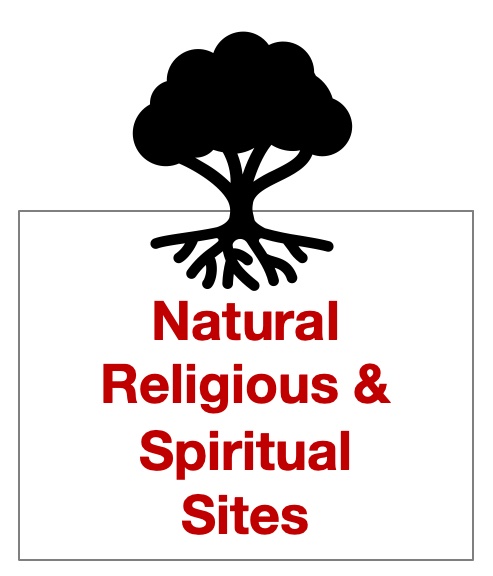Living religion comes in an endless variety of forms and is shaped by and shapes the local landscape. Click on one of the icons below to learn more about the forms and sites of living religion. Each of the blocks here describes a different form and associated sites for religious and spiritual practice across local landscapes.
Forms of religion are broad categories of religious practice that can be structured into a taxonomy of living religion. Organizing categories of religious practices in this way can help with observation, analysis, and critical reflection on how religion functions in people’s lives. Some of these forms, particularly institutional religion, will likely be familiar. Others, such as domestic religion or commercial religion, may be surprising. Yet, though we are most familiar with institutional expressions of religion there is much more variety and fluidity in how and, importantly, where people practice what they understand as “religion” or “spirituality” or what sites are considered sacred. Religious sites are the specific places where people practice various forms of religion. Just as institutional forms of religion are most familiar, institutional religious sites— churches, mosques, synagogues, temples, and so on associated with specific religious traditions — are generally most recognizable. Religious sites can also be considered what Eric Klinenberg terms “social infrastructure,” or physical places that bring people into contact with others, facilitate relationships, and serve as spaces for mutual support (2018).
It’s important to bear in mind that all religious sites are forms of religion. Not all forms of religion are religious sites. Religious sites are actual places in which forms of religion are located but forms of religion can be more fluid and mobile. For example, prayer is a form of religion that can take place both in institutional religious sites or in a variety of everyday sites like homes and offices.
Of course, while the descriptions for each icon suggest that forms and sites for religious practice are mutually exclusive, they often overlap, intermingle, and influence one another. We encourage you to use the descriptions provided by each icon to grasp the basics of the different forms of religion and the sites where they are practiced as well as to develop your own understanding of the forms of religion as you encounter them in the field and through other learning content.
Click on one of the icons below to learn more about different forms and sites for religious practice.
LRC Googleville-Encounter Map
